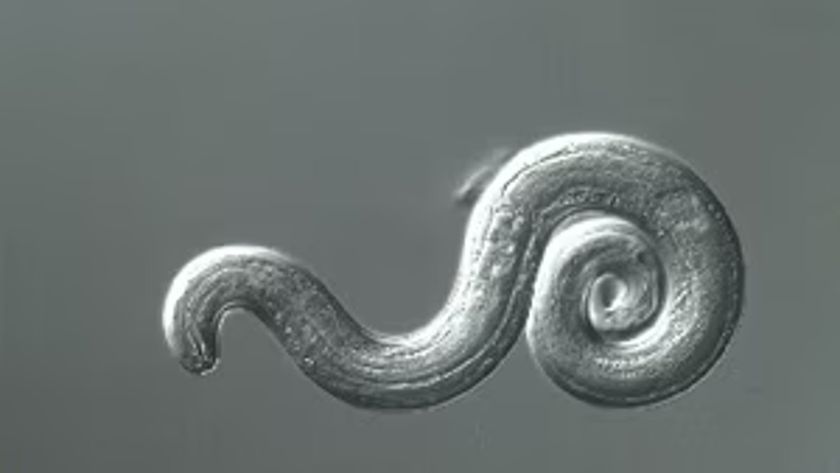Obese Preschoolers Already Show Signs of Health Problems

Some overweight and obese preschoolers may already have risk factors for heart disease and diabetes, a new study from Italy suggests.
The study involved more than 5,700 healthy children ages 2 to 6 who visited pediatricians in Rome between 2011 and 2012. Of these children, about 600 (about 10 percent) had become overweight or obese within the last year, and the researchers ran detailed blood tests about 200 of these children for the study.
They found that nearly 40 percent of these children had at least one abnormal reading in their metabolism — such as high blood pressure, high cholesterol, elevated blood sugar or low levels of "good" cholesterol — which, in studies of adults, have been linked with an increased risk of heart disease and diabetes. About one-third of the children had nonalcoholic fatty liver disease, or a buildup of fat deposits in the liver.
Obese children with such abnormal results also had a higher body mass index (BMI) than obese children without metabolic abnormalities, the study found. [10 Ways to Promote Kids' Healthy Eating Habits]
The findings show that the metabolic abnormalities linked with obesity are present in young children, even though these children have only been overweight or obese for a short period of time, the researchers said. "Our results suggest that the risk for metabolic abnormalities related to obesity begins to manifest early in the natural history of weight gain," the researchers, from the Bambino Gesù Children’s Hospital in Italy, wrote in the Aug. 11 issue of the journal JAMA Pediatrics.
The findings suggest that doctors may need to screen for such abnormalities in children at an earlier age than is currently recommended, the researchers said. The American Academy of Pediatrics recommends that all children get screened for high cholesterol at least once between ages 9 and 11.
However, it's not known whether the metabolic abnormalities seen in the preschoolers in the study will lead to health problems at a later age. More studies are needed that follow the children over time to determine this, the researchers said.
Sign up for the Live Science daily newsletter now
Get the world’s most fascinating discoveries delivered straight to your inbox.
Dr. Luis Gonzalez-Mendoza, director of pediatric endocrinology at Miami Children's Hospital, said he was not surprised by the study's results, because he often sees these risk factors in children, around ages 8 to 10, particularly if they have a family history of diabetes or high blood pressure. "With obesity, we're starting to see it more often than not," Gonzalez-Mendoza told Live Science.
Gonzalez-Mendoza said that children with these risk factors may develop complications of obesity at an earlier age. For example, if a child has fatty liver disease at age 6, "and it just worsens with age, what's going to happen at the age of 30?" Gonzalez-Mendoza said.
Dr. Shaista Safder, a pediatric gastroenterologist at the Arnold Palmer Hospital for Children in Orlando, said that screening children for high choloesterol or high blood sugar can start as young as age 2 in those with risk factors for these conditions, such as a family history of the diseases. The goal of screening is to pick up on potentially harmful metabolic changes sooner rather than later, Safder said.
If a child's lifestyle is changed early enough, "you could at least slow down, or potentially reverse some of those changes," Safder said.
Treatment for high blood fat levels or high blood sugar typically involves lifestyle changes such as cutting down on foods high in saturated fat, trans fat, and sugar, an increasing exercise levels, Safder said. If these methods don't work, some children are prescribed medications, such as cholesterol-lowering drugs, she said.
Follow Rachael Rettner @RachaelRettner. Follow Live Science @livescience, Facebook & Google+. Original article on Live Science.

Rachael is a Live Science contributor, and was a former channel editor and senior writer for Live Science between 2010 and 2022. She has a master's degree in journalism from New York University's Science, Health and Environmental Reporting Program. She also holds a B.S. in molecular biology and an M.S. in biology from the University of California, San Diego. Her work has appeared in Scienceline, The Washington Post and Scientific American.

Parasite lurking in woman's brain caused mysterious 'burning' leg sensation

1,300-year-old royal flush toilet used by crown prince discovered at palace in Korea

The Vortex Optics 10x36 Monocular is superbly capable for birdwatching, outdoor activities and even basic astronomy — now with a $50 saving in this Adorama deal